Travelling can be stressful, especially regarding luggage weight limits and fees. Whether you’re packing for a short or long trip, knowing how to measure your luggage weight is essential.
Measuring the weight of your luggage is an important step to ensure compliance with airline restrictions and avoid unexpected fees or complications during your travels. By accurately measuring the weight of your luggage. You can assess whether it falls within the allowed limits and make necessary adjustments if needed.
We’ll take you step-by-step on how to measure luggage weight using a weighing scale. We’ll also explore alternative ways to weigh your luggage without a scale if you don’t have one available.
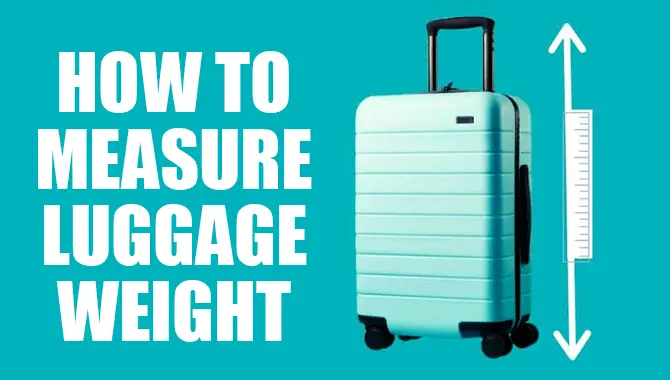
How To Measure Luggage Weight – 8 Steps
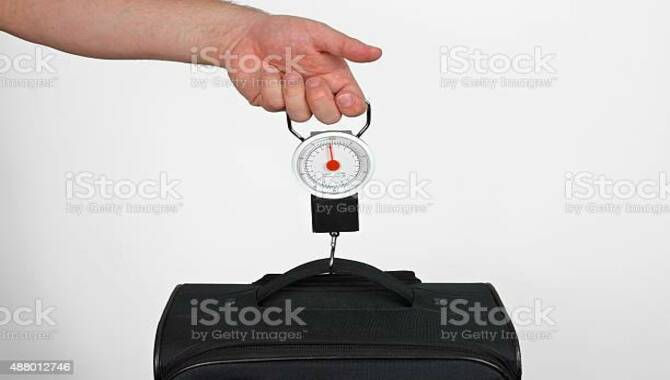
Measuring luggage weight is important for a number of reasons. First and foremost, airlines have strict regulations on the weight of both checked and carry-on luggage. By measuring your luggage before heading to the airport, you can avoid costly fees and delays at check-in.
Knowing the weight of your luggage can help ensure that you are able to manage it safely and comfortably during your travels. Overweight or unbalanced luggage can be difficult to manoeuvre, leading to injuries or damage to your belongings.
Finally, being aware of the weight of your luggage can help you pack more efficiently. And avoid overpacking, saving you time and money and reducing your carbon footprint by minimizing excess baggage on flights. Here we give you proper guidelines on how to measure luggage weight:
Step 1: Prepare A Weighing Scale
Preparing a luggage scale is essential to measure your belongings’ weight accurately. You can use different scales, such as a handheld luggage scale or household items, like a bathroom scale, to weigh your bag.
When using a digital luggage scale or other scales, ensure it is calibrated correctly for an accurate reading. After placing your suitcase on the weighing device, ensure it’s stable and not tilted before recording the weight displayed on the screen.
If you exceed the weight limit for checked or carry-on luggage as per your airline’s website or baggage allowance. Consider redistributing some items across multiple bags or removing some belongings to avoid overweight fees and additional charges.
Step 2: Set Up The Weighing Scale
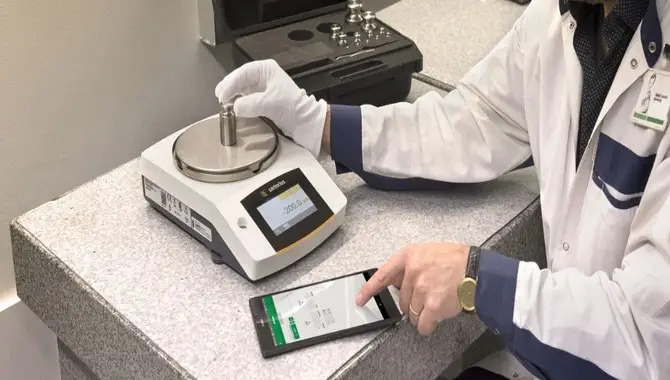
To prepare a weighing scale for measuring your luggage weight accurately, you need to follow these steps. First, choose a dependable weighing scale capable of bearing the weight of your suitcase or carry-on bag.
Next, position the weighing scale on a firm surface like a plank or hotel room floor that won’t move when you place your luggage. After this, switch on the digital luggage scale and wait for it to stabilize at zero before placing your baggage on it.
Then, lift your suitcase or personal item and put it precisely at the centre of the handheld luggage scale’s surface area to evenly distribute its weight. Finally, please wait until you get an accurate reading before recording it.
Step 3: Weigh Yourself (Optional)
When you cannot weigh your luggage before leaving home. There’s no need to worry, as there are other ways to obtain an accurate reading. Weighing yourself with the suitcase is one option useful when in a pinch. Use a bathroom scale or a handheld luggage scale for this purpose.
Alternatively, check if your hotel room has a scale or visit the local gym and use their weight equipment. To estimate the baggage weight accurately, step onto the scale with your belongings and subtract your body weight from the combined reading.
Step 4: Prepare The Luggage

Remove unnecessary items to ensure accurate measurement of your luggage weight when preparing it for weighing. Ensure that all compartments and pockets in the suitcase are secure before weighing. Any loose belongings, such as shoes or toiletries, should be placed inside a plastic bag to prevent them from adding extra weight.
Once prepared, the suitcase can be weighed using a digital scale or built-in scales found at check-in counters. By taking these precautions beforehand, travellers can avoid excess baggage fees.
Step 5: Lift And Weigh The Luggage

To accurately weigh your luggage when travelling, follow a few simple steps. Begin by choosing an accurate digital or handheld luggage scale that can accurately read in either pound (lb) or kilograms (kg). Clear the scale and ensure it is set to zero before placing your suitcase or carry-on bag on it.
Once your baggage is secure on the tape measure or built-in platform, read and record its weight accurately for future reference. If you’re using a handheld luggage scale, be sure to subtract its weight from that of your belongings for a more compact travel option that won’t take up too much space in your hotel room or personal item bag during travel.
Step 6: Take The Weight Measurement
To measure your luggage’s weight accurately, place it on either a bathroom or handheld scale and ensure it’s balanced and not touching any other object. If you’re using a bathroom scale, step on it first to note your weight. Then hold your suitcase and step back onto the scale for an accurate combined measurement.
On the other hand, if you’re using a digital luggage or handheld scale, carefully follow its instructions for the best results. Be sure to note whether the weight displayed is in pounds or kilograms. Knowing your luggage weight is crucial to avoid overweight baggage fees when travelling by air or post office regulations for mailing packages.
A compact digital luggage scale or built-in tape measure can be handy household items for frequent travellers in ensuring their belongings are within weight limitations before check-in. Excess baggage fees can be a hassle and add up quickly. This makes knowing ahead of time how much your suitcase weighs crucial.
Step 7: Calculate The Luggage Weight (If Necessary)
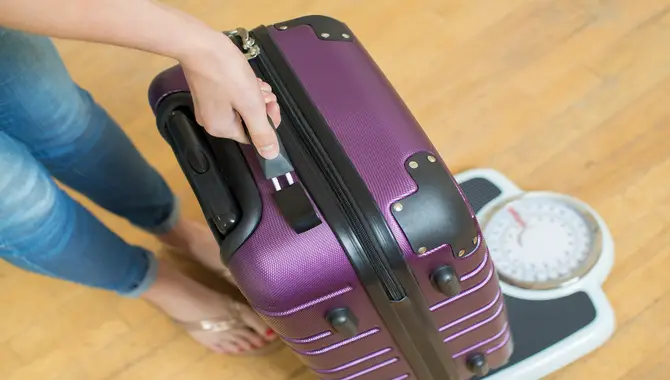
When determining the weight of your baggage, it is important to have a scale that can accommodate its weight. Place your suitcases on the scale and stabilise them before obtaining an accurate reading. If you have multiple bags, weigh each separately and combine their weights to obtain the total luggage weight.
Removing certain items or redistributing contents among other bags may be necessary if your baggage exceeds your airline’s allotted weight limit. This will help avoid additional fees charged for overweight baggage when checking in or at boarding gates.
Step 8: Record The Luggage Weight
To measure your luggage weight accurately and avoid excess baggage fees at the airport, follow these simple steps. Prepare your luggage by ensuring it’s balanced and not touching any other object before lifting and weighing it using either a bathroom scale or a luggage scale.
Please take note of the weight measurement in pounds or kilograms according to your airline’s measurement system and record it for future reference. Weighing your luggage at home before heading to the airport can save you from unexpected overweight fees and hassle during check-in.
Consider purchasing a digital luggage scale or checking with your airline’s website for more information on baggage allowances and restrictions.
Ways To Weigh Luggage Without A Scale
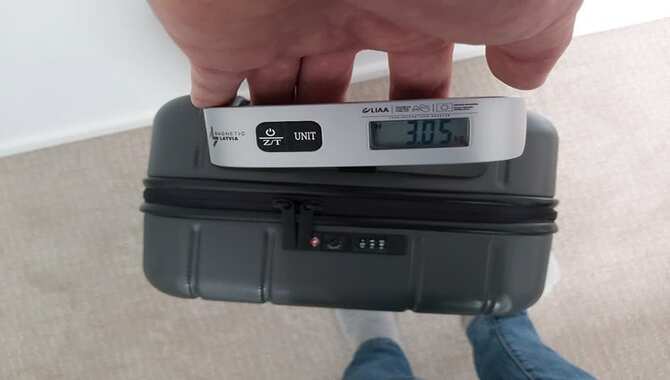
Weighing your luggage is essential before heading to the airport to avoid any surprises at check-in. If you don’t have a scale available, several alternatives can help you estimate the weight of your luggage accurately.
For instance, you can compare the weight of your suitcase with that of common household items or use a strap with a built-in tape measure. Similarly, digital scales or bathroom scales can also accurately read your luggage’s weight.
Remember that carrying more than the allowed limit could incur additional fees and hassle while travelling. Always weigh your baggage beforehand and pack wisely to avoid exceeding weight restrictions.
Weight Limit For Checked Luggage
When measuring the weight of your luggage, it’s essential to ensure that it falls within the weight limit set by your airline. You can use either a digital or a bathroom scale to do so accurately.
However, if you don’t have access to these scales, you can use other household items like gallons of water as a reference point for weight measurement. While checking in, please ensure that you already know all about the baggage allowances and extra fees charged for overweight bags.
Pack lighter items and distribute them evenly throughout your suitcase/checked bag/carry-on bag to avoid such unwanted hassles at check-in counters or post offices.
Weight Limit For Carry-On Luggage
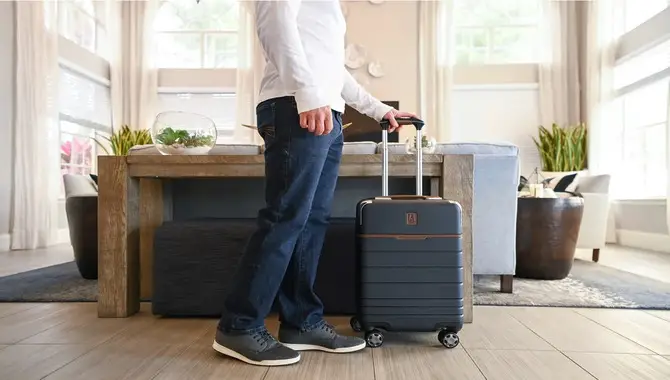
To ensure that you don’t end up paying extra baggage fees for your carry-on suitcase. It is crucial to be aware of the weight limit set by your airline. Before leaving for the airport, use a digital luggage scale or even a household bathroom scale to get an accurate reading of the weight of your bag.
Remember that different airlines may have varying weight limits for carry-on luggage. So always check with your specific airlines before travelling. Packing lightweight items and compressible belongings is always a good idea. You can also consider purchasing a suitcase with built-in digital scales that will help you avoid any hassle at the airport.
Conclusion
Measuring your luggage weight is essential in avoiding any inconvenience at the airport. It’s about avoiding overweight fees and ensuring a smooth and hassle-free travel experience. You can measure your luggage weight accurately by following the simple steps above.
However, if you don’t have access to a weighing scale. There are other ways to weigh your luggage without a scale. Remember that airlines have specific weight limits for checked and carry-on luggage; exceeding them will result in additional fees.
If your luggage is overweight, there are ways to repack and reduce the weight. We hope the above outline on how to measure luggage weight will be helpful for your trip.
Frequently Asked Questions
What Are The Most Accurate Methods For Measuring Luggage Weight?
To accurately measure luggage weight, use a digital scale or weigh yourself on a bathroom scale before and after holding the luggage. Avoid excess baggage fees by measuring before leaving for the airport.
Are There Any Restrictions On The Weight Of Carry-On Luggage Versus Checked Luggage?
There are weight restrictions on carry-on and checked luggage, with limits varying by airline. Typically, carry-on luggage is limited to 7-10kg, while checked luggage can be up to 23-32kg.
Are There Any Portable Luggage Scales That Are Recommended For Frequent Travellers?
Various portable luggage scales are available for frequent travellers, including the Etekcity Digital Luggage Scale and Tarriss Jetsetter Digital Luggage Scale. These compact and lightweight devices can help avoid costly overweight baggage fees.
Are There Any Portable Luggage Scales That Can Be Used While Travelling?
Portable luggage scales are available in the market, which are lightweight and compact for easy travelling. Popular brands include Samsonite, Etekcity, and Tarriss. It’s important to read reviews and compare features before buying one to ensure its accuracy and suitability.
Is There A Maximum Weight Limit For Checked Luggage?
Yes, there is generally a maximum weight limit for checked luggage when traveling by air. The specific weight limit can vary depending on the airline and the fare class you are traveling in. However, most airlines have a standard weight limit for checked bags, which is typically around 50 pounds or 23 kilograms.


